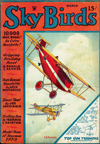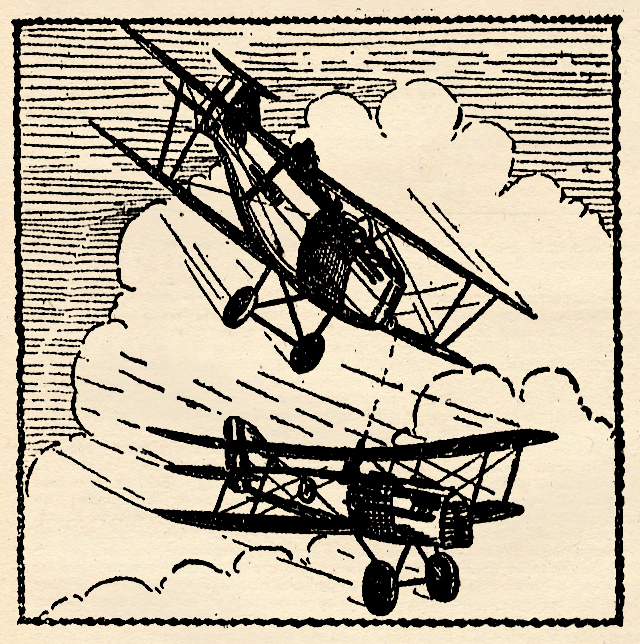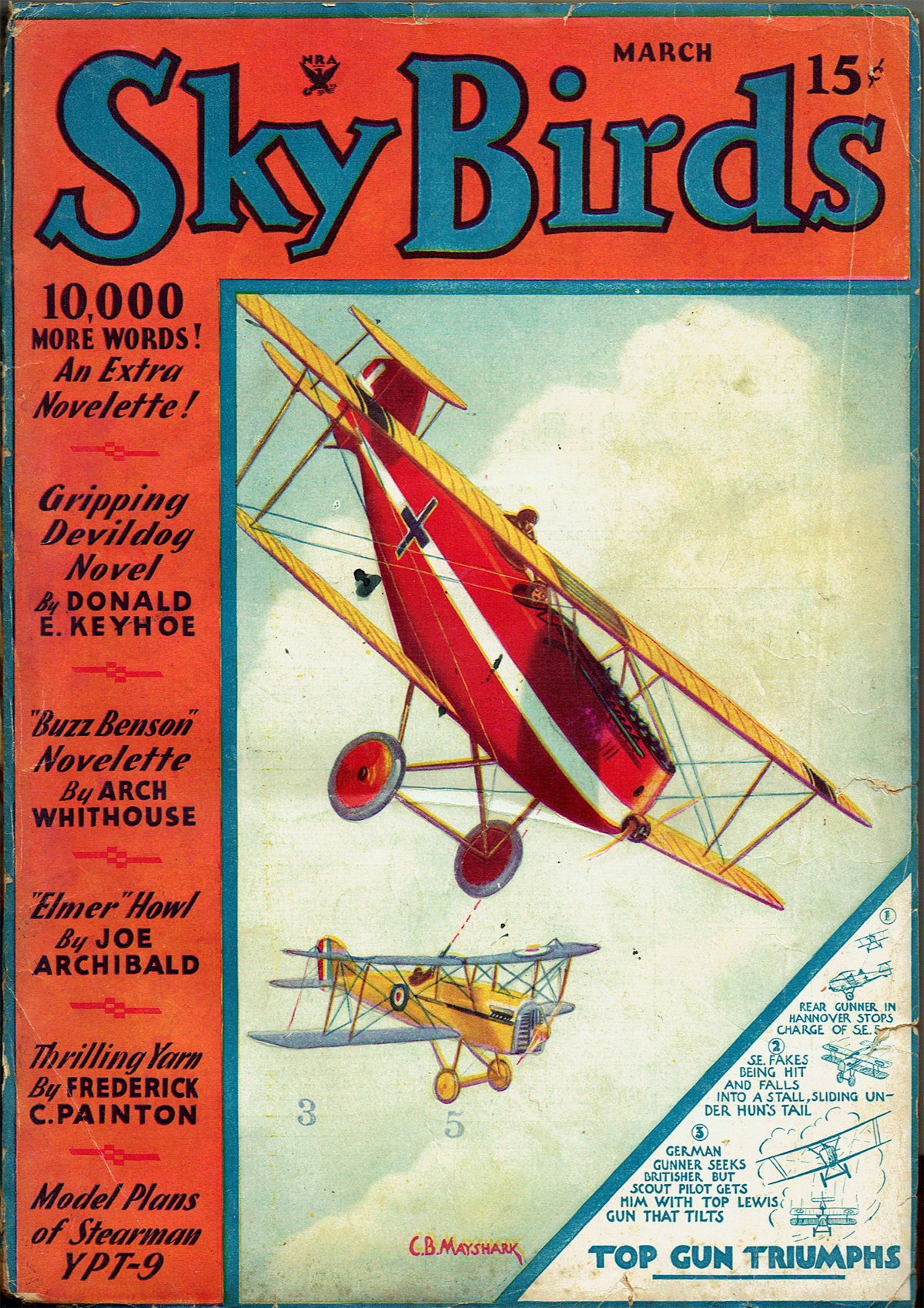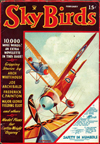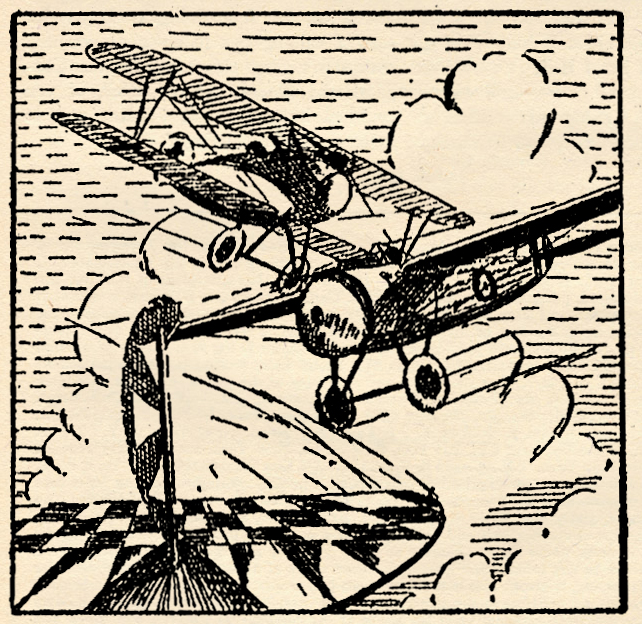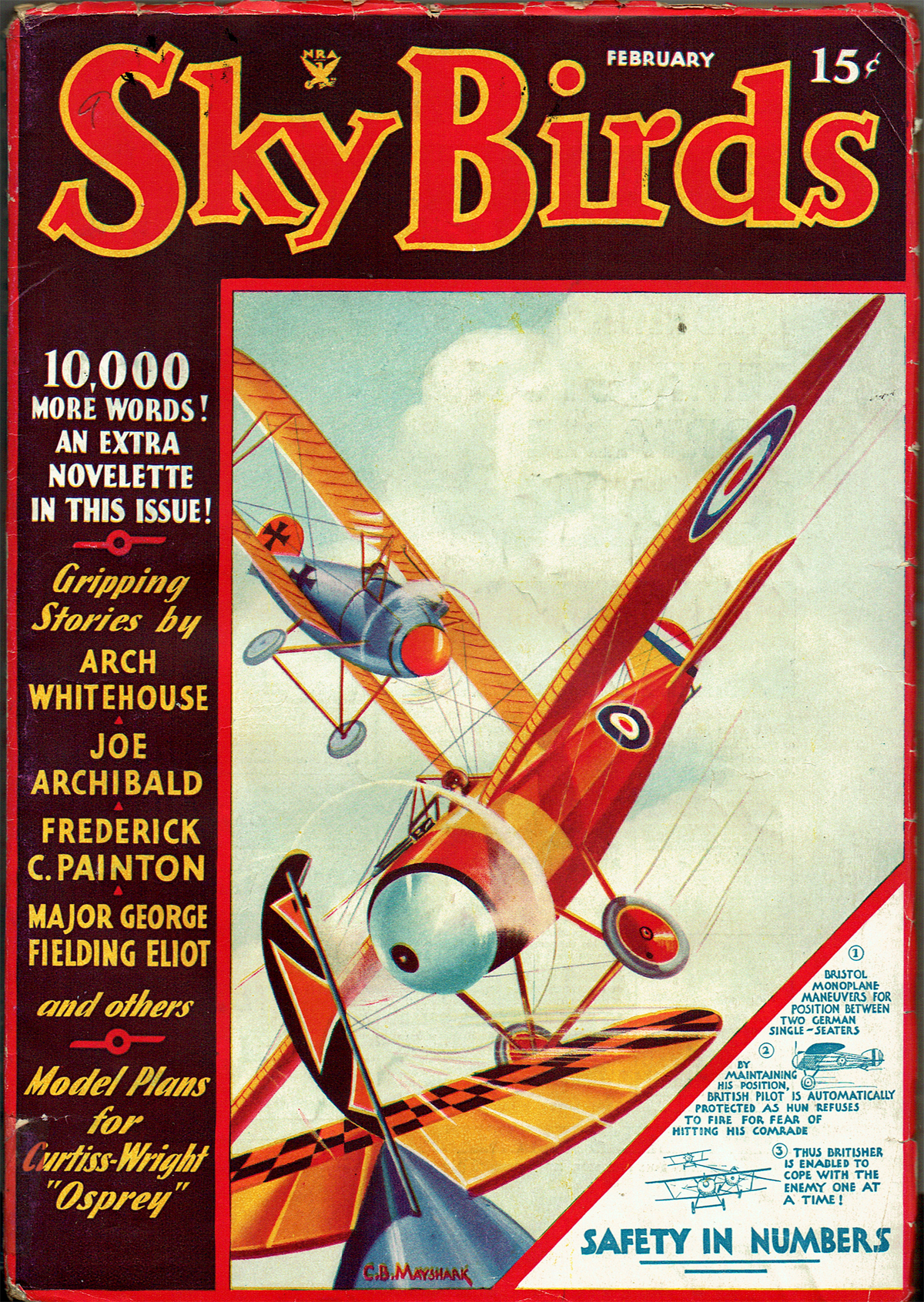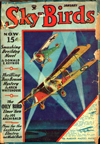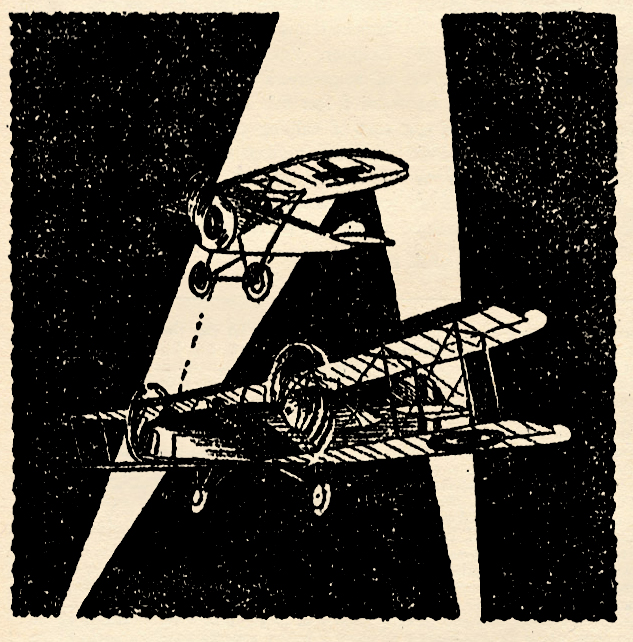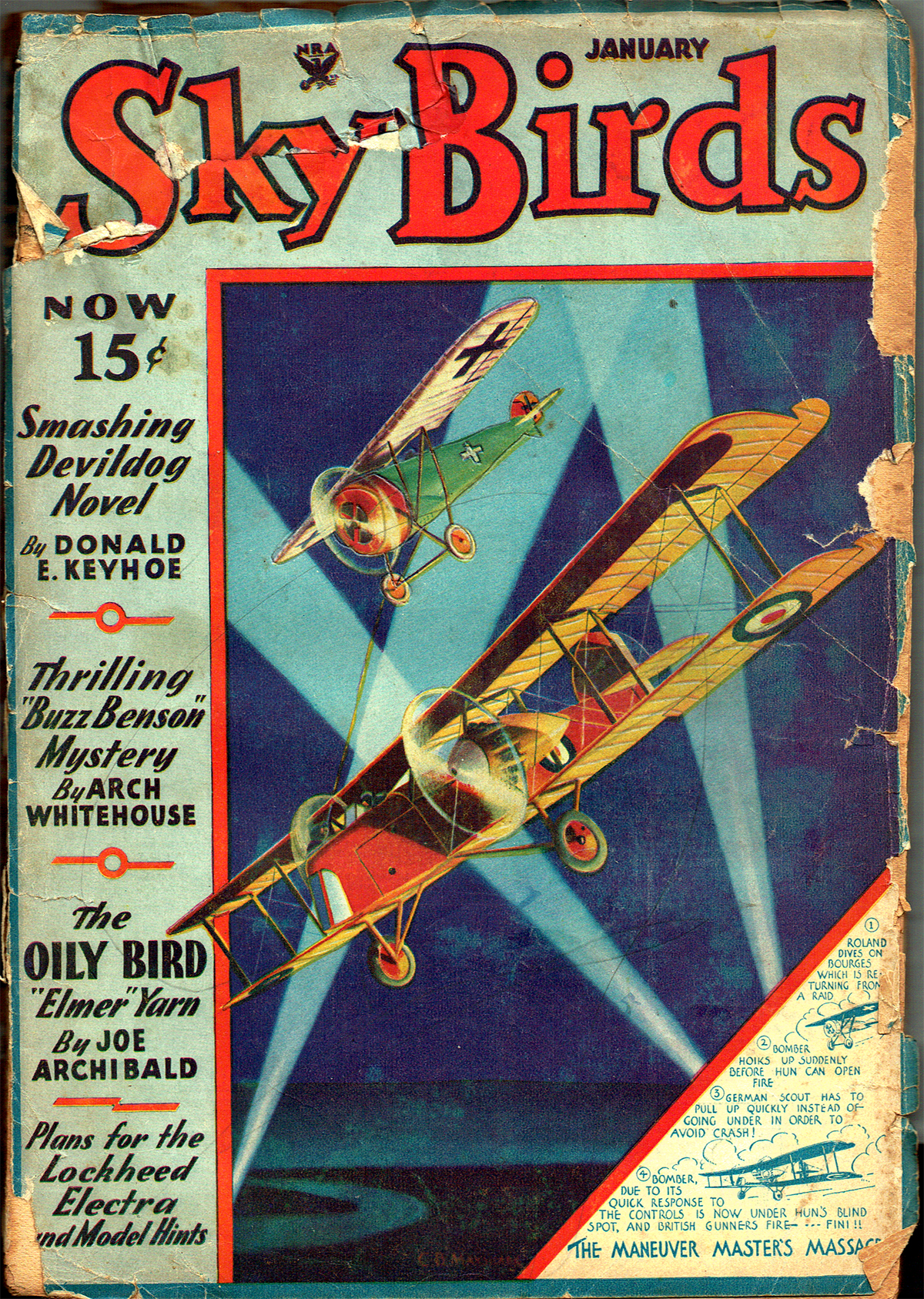“Sky Birds, April 1935″ by C.B. Mayshark
THIS May we’re celebrating the genius that is C.B. Mayshark! Mayshark took over the covers duties for Sky Birds with the July 1934 and would paint all the remaining covers until it’s last issue in December 1935. At the start of his run, Sky Birds started featuring a different combat maneuver of the war-time pilots. The lower corner presenting a play-by-play of that month’s maneuver with the remainder of the cover illustrating it. For April 1935 issue Mayshark gives us “Superiority in Speed!”
Combat Maneuvers of War-Time Pilots:
Superiority in Speed
THE predominating factor in the 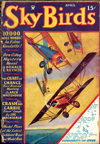 development of aviation ever since the Wright Brothers took wing has always been speed. Speed has been the password of the manufacturers and the demand of the public, and this element has done more than anything else to foster the building of better ships.
development of aviation ever since the Wright Brothers took wing has always been speed. Speed has been the password of the manufacturers and the demand of the public, and this element has done more than anything else to foster the building of better ships.
The keenest competition that the aircraft industry probably will ever know took place between the years 1914 and 1918. If some German appeared with a new ship that was superior in speed to any of its predecessors, it was but a matter of time before the Allied forces came forth with a plane that had the German one stopped dead in its tracks. And vice versa.
One of the fastest planes produced in the war was a French ship called the De Marcay biplane. This plane was not constructed until late in the war, and therefore it did not see much active service. However, had the ship been produced in mass, and had numbers of them been thrown against the machines of the enemy, there is no doubt but what it would have come through with flying colors.
On our cover this month we have illustrated the method by which the speedy De Marcay was enabled to attack two or more enemy ships and get away with it.
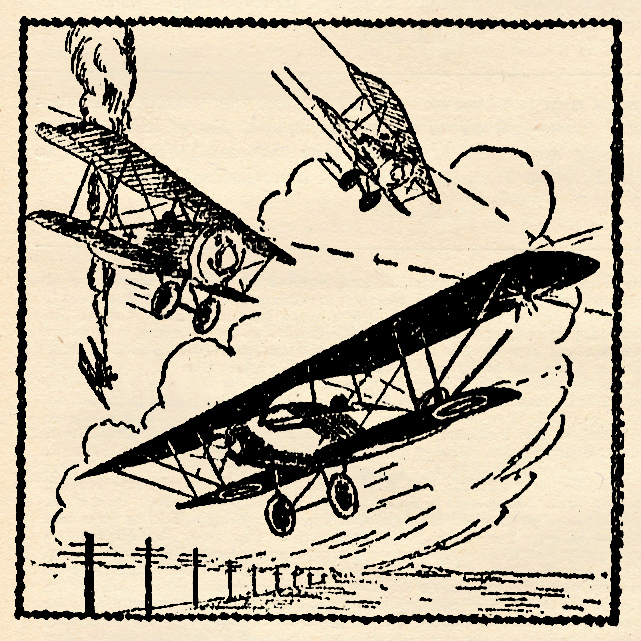
Returning from an artillery spotting job far over the lines, the French pilot suddenly finds himself confronted by three German scouts who are determined to keep him from returning with his valuable information. The sector is in a rural district which has not been torn up by the racking fire of heavy artillery, and there is nothing below but smooth, level fields and a line of telephone wires. An ideal place to bring this devil down, thinks the leader of the Hun patrol. No trouble about getting a victory confirmation here.
But the German patrol leader is doomed to disappointment. Worse than that, he is doomed to death. Yet death comes so quickly that he scarcely knows what hit him.
Banking around in a tight turn so as to attack from an angle, the Frenchman opens his throttle wide and comes tearing down across the sky, head-on into the enemy formation. One burst of fire is enough to knock the leader out of position, and as he falls rapidly in a sickening spin, blue smoke begins curling up around his fuselage. Suddenly he is a mass of fire—a flamer!
Continuing on in a straight line at a terrific rate of speed, the De Marcay biplane darts between and below the two remaining German scouts before they know what it’s all about. As he gets clear and heads for the lines, the Hun ships reform and attack with a little altitude to their advantage. Their tracer hits, but the Frenchman is going too fast for accurate aiming. He loses an outer interplane strut, but that’s all.
So a victory is won, and speed is the one thing that gets the credit. The Frenchman continues home unmolested, lands, and makes his report. He is a good pilot, yes. But besides that, he has a ship that is faster than anything else on the Western Front.
The De Marcay biplane was powered with a 300-h.p. Hispano-Suiza motor. Its top speed was 162 miles per hour, and an overall safety factor of 14 was claimed for the machine.
The German ship pictured on the cover is one of the many types of single-seater biplane that the L.F.G. Boland concern put out. It was designated as type D XIV, and it was powered with a 160-h.p. Goebel engine.
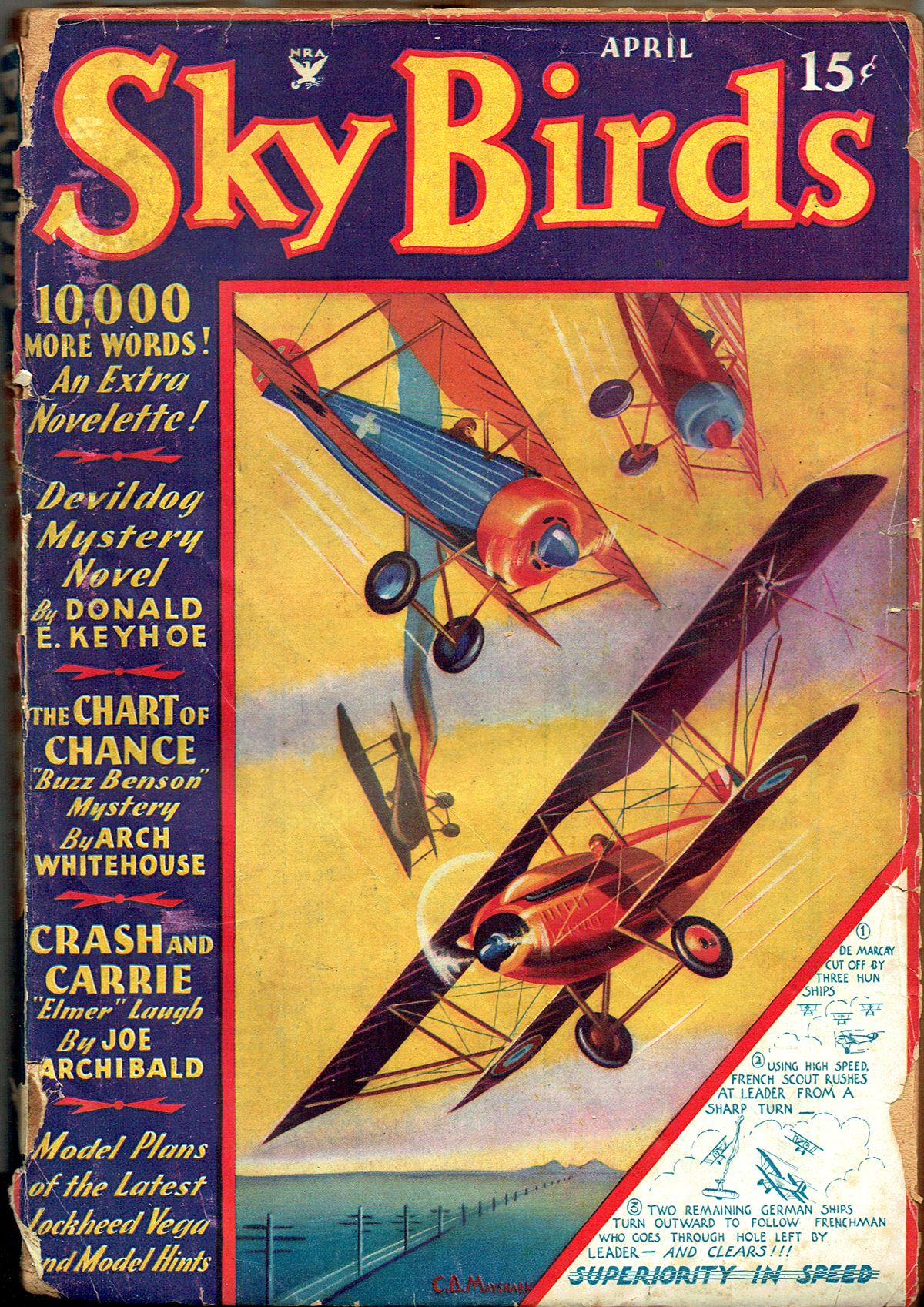
Sky Birds, April 1935 by C.B. Mayshark
(Combat Maneuvers of War-Time Pilots: The Story Behind This Month’s Cover)







